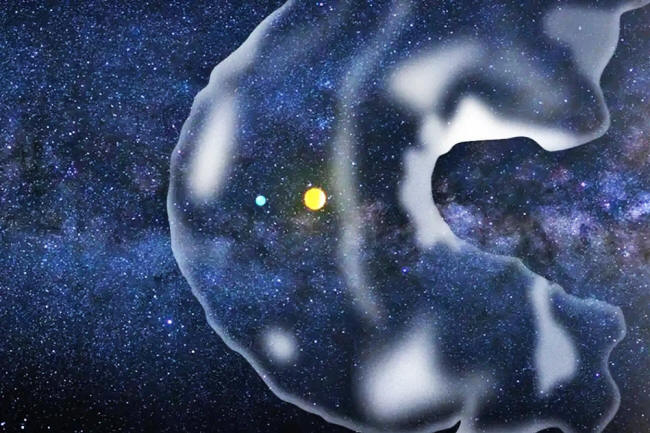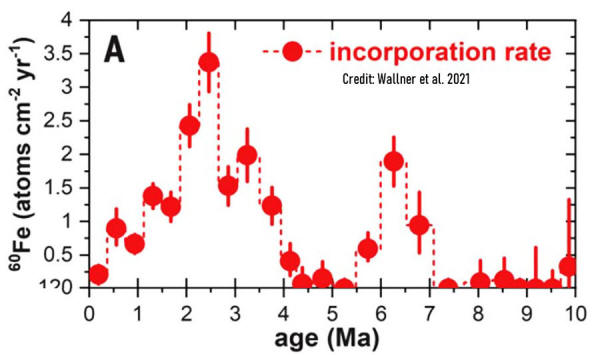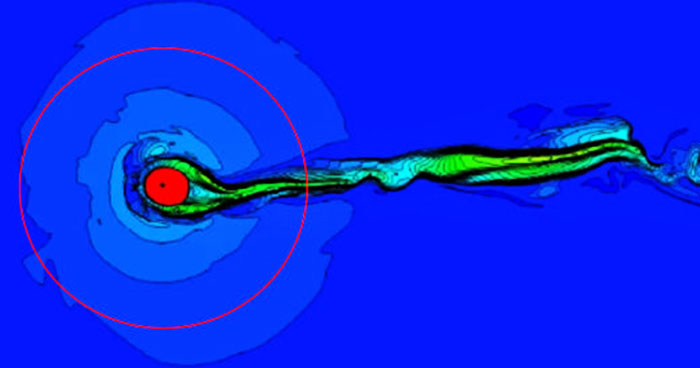|
June 10, 2024
Illustration of the protective bubble
around the sun
(yellow dot) and Earth (blue dot)
Like all the other planets in the Solar System, it is cocooned within the sun's magnetic field, a giant bubble called "the heliosphere."
The heliosphere protects us from dangerous things in the Galaxy like interstellar clouds and cosmic rays.
A new paper
(A
possible direct exposure of the Earth to the cold dense interstellar
medium 2-3 Myr ago) just
published in Nature Astronomy argues that a dense cloud of gas hit
the Solar System, compressing the heliosphere to a fraction of its
usual size.
Researchers have long wondered if something happened to Earth 2 to 3 million years ago.
...from that time period all contain extraterrestrial radioactive isotopes (iron-60 and plutonium-244).
The peak is quite striking:
In the constellation Lynx there is a ribbon-shaped cluster of dense interstellar clouds.
Using a velocity model for the clouds, they found that the sun and at least one of the clouds may have crossed paths 2 to 3 million years ago.
According to their simulation, the helioshere was
compressed and stretched into a tadpole-like structure with Earth's
orbit (red circle) on the outside:
Deep in our oceans, fossils of tiny marine organisms known as foraminifera preserve ancient climate data. Oxygen isotopes in those fossils suggest the temperature dropped 2-3 million years ago.
Could this be a result of interstellar gas and cosmic rays altering our atmosphere?
Eventually, the cloud passed and the heliosphere bounced back.
It's a
good place to be...
|




